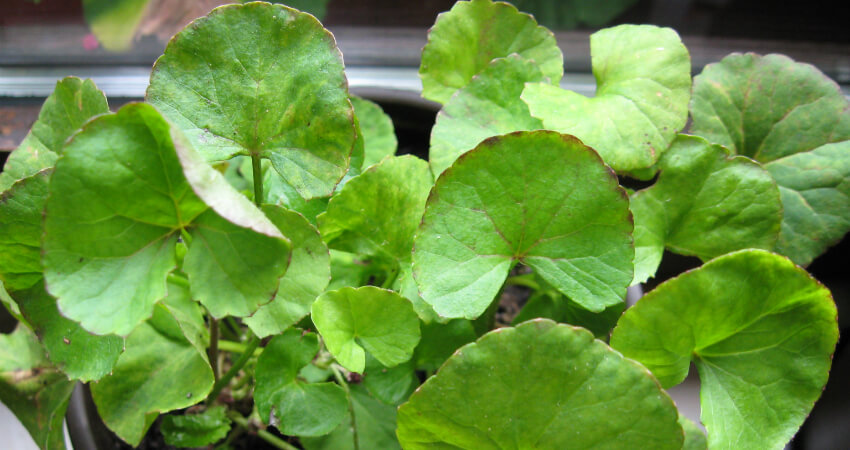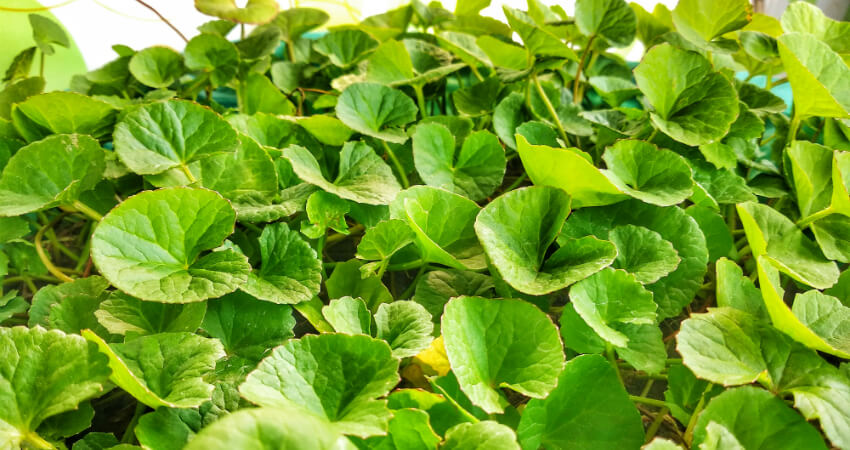The plant grows in tropical swampy areas. The stems are slender, creeping stolons, green to reddish-green in color, connecting plants to each other. It has long-stalked, green, rounded apices which have a smooth texture with palmately netted veins. The leaves are borne on pericardial petioles, around 2 cm. The rootstock consists of rhizomes, growing vertically down.
They are cream in color and covered with root hairs. The flowers are white or pinkish to red in color, born in small, rounded bunches (umbels) near the surface of the soil. Each flower is partly enclosed in two green bracts. The hermaphrodite flowers are minute in size (less than 3 mm), with 5-6 corolla lobes per flower.
Each flower bears five stamens and two styles. The fruit is densely reticulate, distinguishing it from species of Hydrocotyle which have smooth, ribbed or warty fruit. The crop matures in three months, and the whole plant, including the roots, is harvested manually.
Centella asiatica is an important medicinal herb that is widely used in the Orient and is becoming popular in the West. Triterpenoid, saponins, the primary constituents of Centella asiatica are mainly believed to be responsible for its wide therapeutic actions.
PROPAGATION
It is propagated through stem cuttings comprising of rooted node with few leaves. To plant one hectare area, about 1,00,000 nos of plants are required. If the weather is congineal, the cuttings are either directly planted in the field or alternatively established in nursery beds and after about 4-6 weeks after transplanting in the main field.
The land is ploughed well and brought to fine tilth. Later it is divided into convenient sized beds. A light irrigation should be provided one to two days before planting to get good anchorage to roots. The plants should be planted in the month of October at a spacing of 30x30cm.
HARVESTING
Intermittent harvesting is done at fortnightly intervals to get the outer leaves from January onwards from growing branches. The harvesting of bulk materials should be done on the month of June, before the onset of monsoon. A few stolons are left as such in the field for the cause of regeneration of which further harvests starts from October onwards. On and average, from one hectare area about 5500 kg of fresh herb, 2000kg dry herb and 20 kg of asiaticoside can be obtained.


![]()